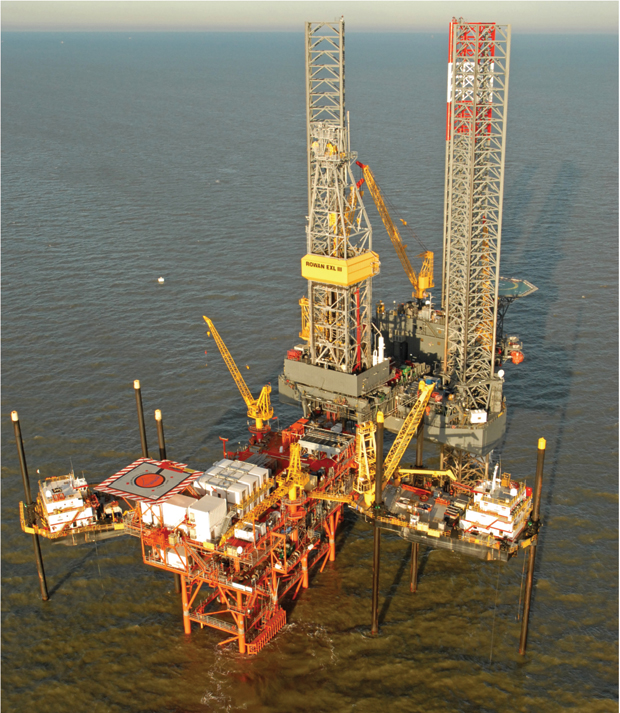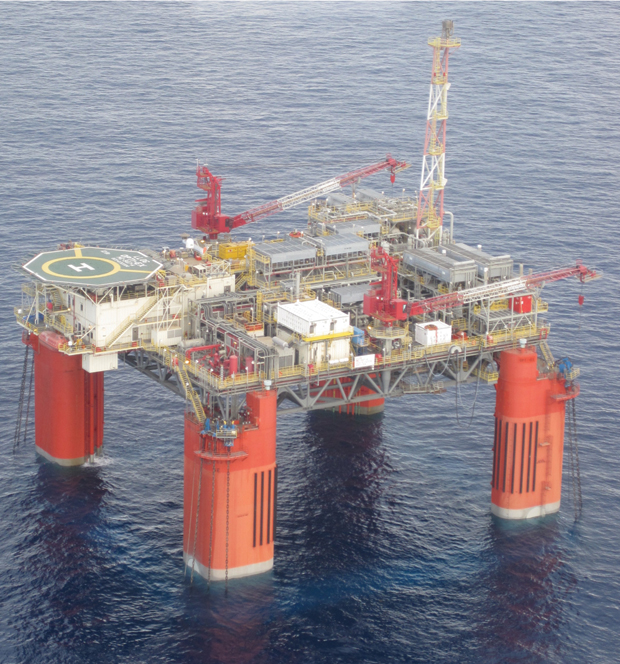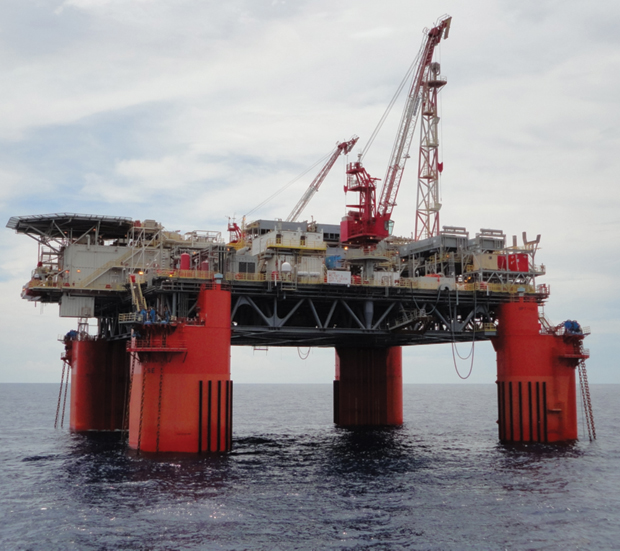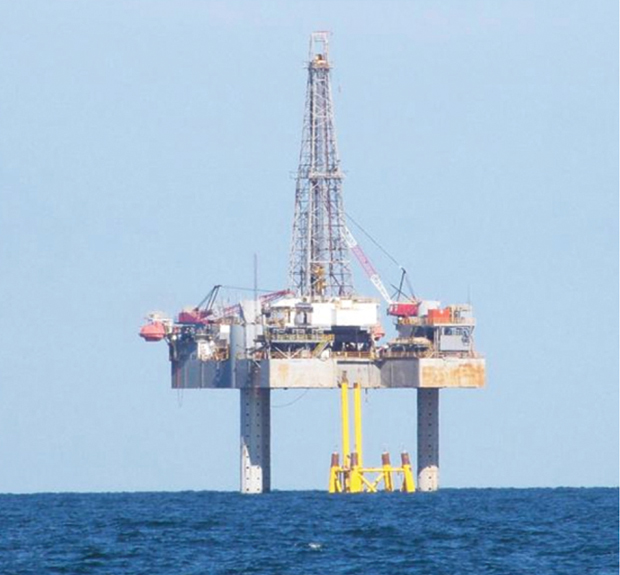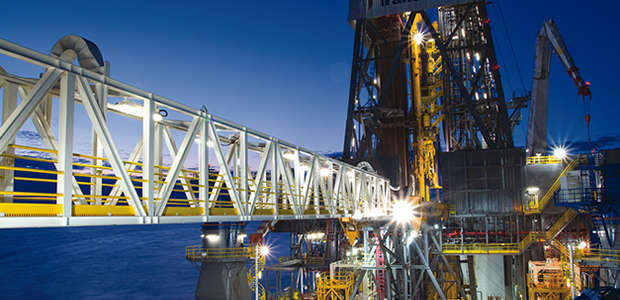
Independents Step Back To The Plate In Gulf Of Mexico
By Al Pickett, Special Correspondent
James R. Moffett admits some people have accused him of “swinging for the fences.”
“They happen to be correct,” responds Moffett, co-chairman of McMoRan Exploration Co. in New Orleans, who says he hopes to hit a home run in 2012.
From the Outer Continental Shelf to deep water, dozens of independent producers, including McMoRan, are stepping back to the plate as activity picks up in the Gulf of Mexico.
“This year is going to be markedly more active,” offers Rusty Walter, president and chief executive officer of Houston-based Walter Oil and Gas Corporation, who says he expects 2012 to be the busiest in the Gulf in four years.
“The main driver is permits have started coming out quicker. About August, we started getting permits in a flurry. Activity is suddenly higher after a logjam last year.”
Another indication of movement was December’s Western Gulf of Mexico Lease Sale 218, which attracted $337,688,341 in high bids and saw 20 companies submit 241 bids on 191 tracts comprising more than 1 million acres offshore Texas. The sum of all bids totaled $712,725,998.
Sale 218, the last remaining Western Gulf Planning Area sale scheduled in the 2007-12 OCS Oil and Natural Gas Leasing Program, made available 3,913 blocks covering more than 21 million acres, according to the Bureau of Ocean Energy Management. The blocks were located from nine to 250 miles offshore in water depths ranging from 16 to more than 10,975 feet.
Ultradeep Exploration
While some companies are focusing on the Shelf and others are taking on the challenge of drilling in deep water, Moffett says McMoRan has a different approach with its ultradeep exploration and development activities in the shallow waters of the GOM Shelf and onshore the Gulf Coast.
The Davy Jones No. 2, located two-and-a-half miles southwest of McMoRan Exploration Company’s Davy Jones No. 1 discovery well on South Marsh Island Block 230, confirmed 120 net feet of pay in multiple Wilcox sands, and also encountered 192 net feet of potential hydrocarbons in the Tuscaloosa and Lower Cretaceous Carbonate sections. McMoRan officials believe the appraisal well indicates continuity across the major structural features of the Davy Jones prospects.
“We feel this is such a compelling story,” emphasizes Moffett, whose company has been drilling in shallow Gulf waters below the salt weld since 2008. “We believe the Shelf is the missing link between deep water and onshore. Our data have been calibrated and we believe they are incredibly accurate.”
He says McMoRan has made five penetrations below the salt weld, or listric fault, which have confirmed the company’s geologic model and the highly prospective nature of this emerging trend. The data from the five wells indicate the presence of formations below the salt weld, including the Middle/Lower Miocene, Wilcox, Frio, Tuscaloosa, and Cretaceous Carbonate, all of which have been prolific geologic formations both onshore and in the deepwater Gulf of Mexico, according to Moffett. He says further drilling and flow testing will be required to determine the ultimate potential of the trend.
“When we started, a lot of questions were being asked,” Moffett acknowledges. “Could McMoRan outguess the majors? Could we drill this deep below the salt weld? Why was the Shelf untouched by the majors? Why were they staying in the deep water? Well, we aren’t being asked those questions anymore. We have proved we could do it.”
Completion activities on the Davy Jones No. 1 discovery well at South Marsh Island Block 230 were in an advanced stage, according to an early January McMoRan press release. Installing the central processing facility, a production platform for the Davy Jones No. 1, and sales pipelines had been substantially completed. The production tree, blowout preventer and safety valve, which is rated for pressures of 25,000 psi, were available for installation.
During preparations to install production tubulars in December, a piece of equipment became lodged in the well bore. On Jan. 15, McMoRan successfully retrieved the equipment and was proceeding with completion. It expects to flow test the well during the first quarter, according to Moffett.
“A successful flow test will have important implications on potential reserve additions at Davy Jones and our other ultradeep prospects,” he points out. “We expect first production can be established shortly after a successful flow test.”
Large Structure
McMoRan reports the Davy Jones No. 1 logged 200 net feet of pay in multiple Wilcox sands. An offset appraisal well, the Davy Jones No. 2, is located two-and-a-half miles southwest of Davy Jones No. 1, and confirmed 120 net feet of pay in multiple Wilcox sands, which McMoRan officials say indicates continuity across the major structural features of the Davy Jones prospects. The No. 2 also encountered 192 net feet of potential hydrocarbons in the Tuscaloosa and Lower Cretaceous Carbonate sections. Moffett says McMoRan expects to complete and flow test both wells this year.
He notes that Davy Jones involves a large, ultradeep structure encompassing four OCS blocks, or about 20,000 acres. McMoRan holds a 63.4 percent working interest and a 50.2 percent net revenue interest in Davy Jones. Other working interest owners include Energy XXI, JX Nippon Oil Exploration (USA) Ltd., and Moncrief Offshore LLC.
McMoRan began drilling the Blackbeard East ultradeep exploration bypass well last August. It is permitted to 34,000 feet and had been drilled to 33,400 feet true vertical depth, according to the company’s January update. Logging operations for the section below 30,800 feet were under way.
McMoRan says wireline logs indicate the Blackbeard East encountered hydrocarbon-bearing sands in the Oligocene (Frio) with good porosity below 30,000 feet. Earlier, the well encountered 178 net feet of hydrocarbons in the Miocene sands above 25,000 feet. Moffett says pressure and temperature data below the salt weld between 19,500 and 24,600 feet indicate a completion at those depths could utilize conventional equipment and technologies. Blackbeard East is located in 80 feet of water in South Timbalier Block 144, and McMoRan holds a 72 percent working interest.
The company holds a 69.4 percent working interest and a 53.1 percent net revenue interest in Blackbeard West No. 2, which commenced drilling in November, Moffett continues. It is drilling below 11,700 feet toward a proposed total depth of 26,000 feet. The well is located on Ship Shoal Block 118 in the Blackbeard West Unit, 13 miles east of Blackbeard East. It is targeting Miocene-age sands below the salt weld.
The Lafitte ultradeep exploration well, which the company’s January statement said was McMoran’s third ultradeep prospect to encounter Miocene-age sands below the salt weld, is located on Eugene Island Block 223 in 140 feet of water. It commenced drilling on Oct. 3, 2010, and was drilling below 32,200 feet in January. The company reports wireline logs indicated hydrocarbon-bearing sands with 171 feet of potential net pay, including 56 net feet in the Cris-R section of the Lower Miocene and 40 feet in the Frio section of the Oligocene.
Moffett says McMoRan plans to deepen the Lafitte well to 33,000 feet to evaluate additional Oligocene and potential Eocene objectives. The company holds a 72 percent working interest and a 58.3 percent net revenue interest in Lafitte.
Learning The Ropes
Moffett says operations began Dec. 31 at McMoRan’s Lineham Creek exploration project, which is located onshore in Cameron Parish, La., and is targeting Eocene and Paleocene objectives below the salt weld. It has a proposed total depth of 29,000 feet. Chevron is the operator and holds a 50 percent working interest. McMoRan is participating with a 36 percent working interest.
Ultradeep wells are expensive, but Moffett says, “We feel good, even with gas prices in the $2.50 range. We have spent a lot of money, but we have garnered a lot of information. We are finding Wilcox sands at 26,000 feet.”
He notes that pressure, and temperatures exceeding 400 degrees, are among the challenges McMoRan has faced in its ultradeep wells. Because of that, Moffett says McMoRan has built its own blowout preventers and flowlines because no one previously has operated in those extreme pressures.
“Logging companies have pitched in, too,” he adds. “We now can log to 34,000 feet with wireline. We couldn’t do that when we started.”
Moffett admits the industry is watching closely what McMoRan is doing. “We have earned our stripes,” he maintains. “We have a series of huge structures–10,000 to 20,000 acres–so there is a lot to be found. No one has drilled wells like this before. I think all the industry cautiously wants to believe a small group like ours is right. Hopefully, we will start to de-risk this.”
Who Dat
LLOG Exploration, which has corporate headquarters in Covington, La., discovered the Who Dat Field in Mississippi Canyon Block 503 in 2007, according to LLOG President and Chief Executive Officer Scott Gutterman.
LLOG Exploration expects to achieve 15,000-20,000 barrels of oil and 25 million-35 million cubic feet of natural gas a day from the first three wells in its Who Dat development on Mississippi Canyon Blocks 503, 504 and 547. Development plans call for up to nine additional wells, which would fully utilize this floating production system’s capacity of 60,000 bbl/d of oil and 150 MMcf/d of gas.
“There were a couple years between the discovery well and two delineation wells,” he recalls. “After the delineation wells, it was an 18-month process.”
The moratorium on drilling in the Gulf of Mexico was imposed while LLOG was in the middle of drilling the second delineation well in 2010. “We were very, very fortunate,” Gutterman says. “We were close to reaching total depth and were allowed to finish before all drilling operations were suspended in deep water.”
On Dec. 9, 2011–four years after the initial discovery–LLOG successfully initiated production from the Who Dat development in Mississippi Canyon Blocks 503, 504 and 547, which are located southeast of the mouth of the Mississippi River. Gutterman says LLOG is ramping up production gradually and expects to achieve 15,000-20,000 barrels of oil and 25 million-35 million cubic feet of natural gas a day from the first three wells.
The development plan for the Who Dat Field calls for the company to drill nine additional wells, according to Gutterman, which would fully utilize the floating production system’s capacity to move 60,000 bbl/d of oil and 150 MMcf/d of natural gas.
Gutterman notes that it will take a while to bring the field to its full potential. He says each well takes 60-90 days to drill, complete and tie in. The company is drilling to depths of 16,000-17,000 feet in water depths of 3,500 feet. He says drilling costs range from $40 million to $50 million and completion costs run another $25 million-$30 million a well. LLOG owns a 58 percent working interest in the field and the production facility.
“This is shaping up to be an exciting year for LLOG,” Gutterman exhorts. “In addition to being in excellent financial condition and bringing Who Dat on line, we will bring two new deepwater projects on line, and will continue our deepwater exploration program, which resumed in December after being suspended since the Macondo incident. We will more than double our production with these developments and expect to add significant reserves from our 2012 exploration program.”
He says LLOG’s other deepwater developments–Mandy in Mississippi Canyon 199 and Goose in Mississippi Canyon 751–are scheduled for startup in the first and third quarters, respectively.
Mandy is a three-well oil development, with LLOG owning 50 percent of two wells and 100 percent of the third, according to Gutterman. He says the Goose project, which is 100 percent owned by LLOG, is 12,000-13,000 feet deep and is primarily gas condensate.
LLOG has the Noble Amos Runner rig under contract and on location in Mississippi Canyon 431. The company plans to drill two-three exploration wells with the rig before mobilizing to Mississippi Canyon 503/547 to initiate the development plan at Who Dat. “We have a host of exploratory wells to drill,” Gutterman emphasizes. “We plan to drill three to five Shelf prospects and four to six deepwater exploratory prospects over the next 18-24 months. We are very excited about our exploration inventory, which includes more than 30 deepwater prospects.”
Permitting Issues
Gutterman says that although there is movement again in the Gulf, it remains a slow process to obtain a permit. “It has become more of a timing issue,” he confides. “We haven’t been denied anything, but the approval process has become lengthier. The agencies are seeking to improve efficiency, but until the process becomes more predictable, it is difficult to plan our business. It would be a costly proposition to have a rig under contract with no place to operate it because of permit delays. The agencies are much more responsive than in the immediate aftermath of Macondo, but it is still much slower than before.
“With the financial commitment of a rig contract, you would love to have five permits in hand so you have options, but we are not close to that point,” Gutterman adds. “We have been operating on a permit-by-permit basis with one fully approved permit and an additional two or three very close to getting approved.”
McMoRan’s Moffett agrees that the permitting processing “is a delicate situation. Some people are throwing up their hands, saying they can’t plan an active drilling program and they can’t commit to a rig without a permit. Everyone is still a little cautious because they know something could happen and the people in Washington could pull the plug.”
Part of the delay in receiving permits, according to Rusty Walter, is that the people processing permits for BOEM have to familiarize themselves with the new rules and regulations. “They are steadily shortening the time it takes,” he allows. “Last year, it took eight months; now it is four or five months to get a permit. Every permit is unique. BOEM will work with you. The (people there) want to do it right, but they have to learn to process the paperwork.”
Jon Jeppesen, executive vice president for the Gulf of Mexico for Apache Corporation, confirms that “things are picking up, but not yet at a pace we are happy with. They are slightly ahead of last year, but permits are still not as quick as we would like. It is better on the Shelf.”
Jeppesen calls it a juggling act for operators. “You have to have a rig under contract to sign an authority for expenditure with a partner,” he explains. “You typically have 30 days to start drilling once you sign an AFE. With rig rates at $500,000 a day and spread costs at $1 million a day, you can’t afford to wait for a permit with a rig under contract. In spite of gas prices going down, rig rates are going up.”
He adds that things are tight in the deep water, also. Apache, Anadarko Petroleum and Noble Corporation have made a two-year commitment for a new-build (rig) that will come on line this year. Jeppesen says there are a lot of concerns with all the regulatory hoops companies have to jump through.
“We need a more streamlined process,” he emphasizes. “I am not being critical. BOEM has gone through growing pains by dividing into two groups (adding the Bureau of Safety and Environmental Enforcement). It has a lot of new people in new jobs, and they are being very cautious. The New Orleans district is understaffed, so we are constantly waiting on permits. There are a lot of meetings between the industry and the agencies, trying to figure out how to make it work better and be more consistent. The lag time in deep water actually has increased since midsummer. BOEM is working through the concerns, but it is not there yet.”
Largest Leaseholder
Apache Corp. has been the largest held-by-production acreage owner in the Gulf of Mexico since 2004, and now is the largest producer in waters less than 500 feet deep. Its acquisition of Devon Energy Corp.’s GOM Shelf properties and the addition of properties through its merger with Mariner Energy in 2010 brought significant high-quality assets complementary to Apache’s existing assets, as well as a strategic presence in the deep water, according to Jeppesen.
Independents operating on the Gulf of Mexico agree that while the pace of permit approvals has improved since the deepwater drilling moratorium was lifted in the fall of 2010, it is still far below pre-Macondo rates. This can force companies to operate on a permit-by-permit basis, rather than having multiple projects approved and waiting on a rig.
“We haven’t received our 2012 budget,” he observed in January, “but we tentatively plan to drill three operated wells and three nonoperated wells this year. That doesn’t sound like much, but it is up from one well in 2011. We have an ongoing appraisal project with Anadarko in Heidelberg, and we will drill a couple exploration wells with Anadarko in its Lucius project.”
FMC Technologies Inc. announced in January that it had signed an agreement with Anadarko to provide subsea systems and life-of-field services for Lucius. The Lucius Field is located 275 miles southeast of Galveston, Tx., in Keathley Canyon Block 875 in 7,100 feet of water. FMC’s scope of supply includes five subsea production trees and two manifolds. The equipment will be supplied from FMC’s operation in Houston, and deliveries are expected to begin in the fourth quarter, the company indicates.
Jeppesen says Apache is preparing for a Central Gulf lease sale in May or June, which he says he believes will attract more bidders than Western Sale 218.
Meanwhile, Apache is running nine rigs in shallow water on the Shelf in the Ship Shoal, Grand Pass, Main Pass, West Delta and Eugene Island areas around the Mississippi Delta, which Jeppesen calls the “oily part of the Shelf, which helps our economics. That is why we are there.”
He says Apache is passing on some dry gas prospects in its OCS inventory because $2.50-$3.00 gas is “kiss-your-sister economics.”
Fifty percent of Apache’s wells worldwide produce natural gas, according to Jeppesen, but three-fourths of the company’s revenues come from oil, reflecting the economics of today’s industry.
Because of Apache’s large acreage position, Jeppesen says the company has a lot of mature fields that provide constant work. He says Apache also has found a nice field in 300 feet of water at only 6,000-8,000 feet deep. “We hope to have it on line in 2014,” he says. “We will install a platform in Main Pass Block 308. We plan to drill seven or eight wells in our first development.”
Challenges On The Shelf
Gary Hall, founder, chairman and chief executive officer of Hall-Houston Exploration, says his company has finished drilling and completing three OCS wells in federal waters offshore Louisiana thus far in 2012. “Our plan is to drill six or seven additional wells this year, but a lot depends on rig availability,” he offers.
Hall-Houston Exploration expects to drill nine or 10 wells on the Gulf of Mexico Outer Continental Shelf this year. Here, the Hercules 253, a 250-foot, mat-supported jackup drilling rig is positioned over a support jacket prior to spudding four wells for Hall-Houston at West Delta 89 in 202 feet of water.
Rig availability has become one of the principal challenges in ramping up drilling activities in the Gulf, according to Hall, because so many rigs were cold stacked during and even before the moratorium.
“It takes $7 million-$12 million to get a cold-stacked rig operational,” he calculates. “That is a big number. Contractors need to be guaranteed a rig is going to be in continual use before they spend that kind of money. At $3 gas, you would think there wouldn’t be anything going on the Shelf, but obviously there are numerous prospects and developments with substantial liquids being pursued. You certainly can’t justify the current pace with the price of dry gas alone.”
Hall says many rigs are not being marketed because they were either permanently idled or moved overseas, causing day rates to increase. “In 2009, low-end, shallow jackup rigs were being marketed at $30,000 a day,” he reflects. “Today, those same drilling rigs are $60,000 a day, and deepwater drill ships and semisubmersibles are almost nonexistent. The rigs that are available are tied up with long-term contracts. Companies that already have shallow-water jackups under contract probably would take an additional rig or possibly two, if they were available.”
Hall, who says he has sold his reserves three or four times and his company twice over the years, started his most recent venture in 2005. “There are still a lot of reasonably economic projects in the shallow Gulf,” he contends. “There are relatively few public companies playing on the Shelf.”
In December’s Western GOM Sale 218, there were only 14 bids on 12 Shelf tracts, which Hall says reflects the “mature nature of the Western GOM Shelf.”
“The Western Shelf has been picked over, and tends to be much less liquids prone than the Central GOM. Couple that with gas prices at $2.50-$3.00 an Mcf, and one can readily understand the lack of interest in Sale 218,” he expands. “With the Central Gulf being more liquids prone, it is my guess that the next Central sale will be much more hotly contested, and there will be a lot of deepwater bids as well.”
Hall-Houston was the high bidder on one tract in Western GOM Sale 218.
Resumption Of Activity
Walter Oil and Gas Corp. has resumed drilling its Ewing Bank 834 well. It was one of 33 active drilling projects stopped when the government imposed its Gulf of Mexico drilling moratorium in 2010.
“It is permitted to 21,000 feet total depth in 1,180 feet of water,” Rusty Walter says of the Ewing Bank 834. “That well was at 12,900 feet when the announcement came. They let us drill to 15,000 feet before we stopped.”
He notes that the company expected to reach total depth by the end of January.
Walter also is drilling wells in Eugene Island Block 21 in 19 feet of water and South Timbalier 311 in 400 feet of water. He says Walter Oil and Gas has 13 Gulf wells planned this year, nine of which it will operate. The company has partners, including Apache, Castex Energy, LLOG and others, in most of its wells. “Most of them are gas wells, but there is a lot of good condensate yield,” Walter describes. “All 13 are in federal waters.”
He says the company made a discovery using a barge rig on its Toro prospect in five feet of water in the marsh off La Fourche Parish, La. Walter drilled a 13,500-foot test. “It made nice gas condensate,” he reports. “It has reserves in the 10 billion-12 billion cubic feet equivalent range with 35 percent condensate.”
Because government regulations require companies to match rigs to prospects, Walter says it takes more planning and logistics today. “If the activity level smooths, some services will become more available,” he contends. “The moratorium was so disruptive that the service sector suffered more than oil companies.”
Walter says the number of companies active in the Gulf of Mexico has shrunk greatly. He says many of them left to become involved in unconventional shale gas and emerging tight oil plays onshore.
Consequently, “There is not as much competition for those who want to operate in the Gulf,” he observes. “It is a good spot to be.”
Walter Oil and Gas is active, both offshore and onshore, between New Orleans and Corpus Christi, Tx. In addition to its offshore activity, Walter says his company will drill two wildcat wells onshore in Jefferson County, Tx., this year, and has 13 wells planned either onshore or in the marsh off the coast in Louisiana.
For other great articles about exploration, drilling, completions and production, subscribe to The American Oil & Gas Reporter and bookmark www.aogr.com.







